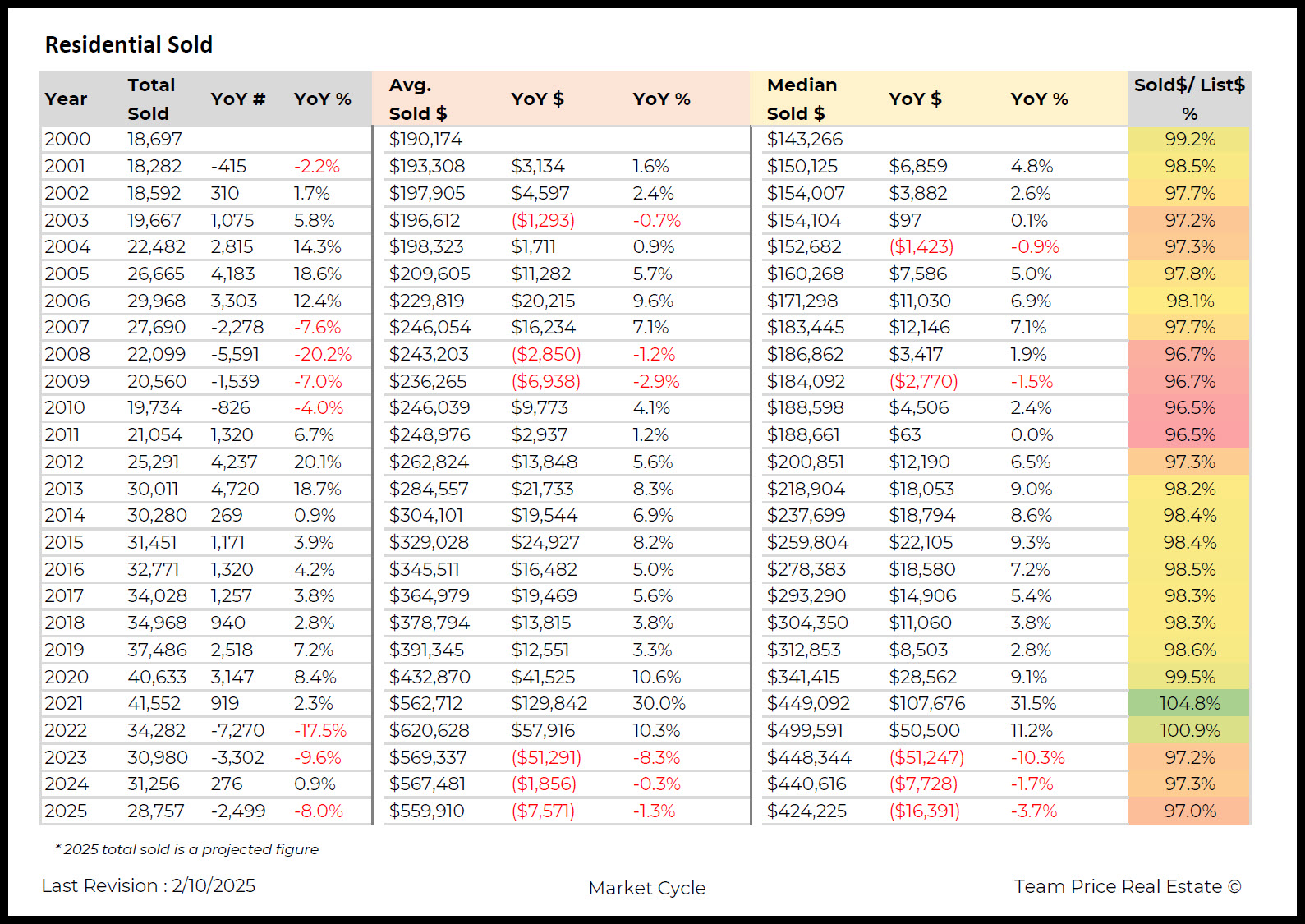Austin Real Estate Sees First-Ever Three-Year Price Decline: 25 Years of Market Data
Published | Posted by Dan Price
Austin Real Estate Market Trends: 25 Years of Data Reveal First-Ever Three-Year Price Decline
The Austin real estate market has experienced many changes over the past 25 years, but recent data shows an unprecedented trend. For the first time in a quarter-century, the Austin area has seen three consecutive years of declining home prices. Analyzing data from 2000 to 2025 provides valuable insights into how the market has evolved and what current conditions may indicate for the future.
In 2000, the total number of homes sold in the Austin area was 18,697, with an average sold price of $190,174 and a median sold price of $143,266. The market showed steady growth over the next two decades. By 2020, home sales had surged to 40,633, and the average sold price had risen to $432,870, while the median price reached $341,415. This period marked a significant increase in both the volume of transactions and home values.
The years 2020 and 2021 saw a dramatic rise in home prices, driven by factors such as low interest rates, high demand, and limited inventory. In 2021, the average sold price jumped 30% to $562,712, and the median sold price rose 31.5% to $449,092. Homes were selling for 104.8% of their list prices, indicating intense competition among buyers.
However, this rapid growth was not sustainable. In 2022, the market began to cool, with total homes sold dropping by 17.5% to 34,282. Despite the decline in sales volume, prices continued to climb, with the average sold price increasing by 10.3% to $620,628 and the median price rising by 11.2% to $499,591. This was the peak before the market started its current downward trend.
The year 2023 marked the beginning of the price decline. The total number of homes sold fell by 9.6% to 30,980. The average sold price decreased by 8.3% to $569,337, and the median price dropped by 10.3% to $448,344. The sold-to-list price ratio also fell to 97.2%, reflecting reduced buyer competition.
In 2024, the market showed signs of stabilization but continued to decline slightly. Home sales saw a modest increase of 0.9% to 31,256, but the average sold price dipped by 0.3% to $567,481. The median sold price decreased by 1.7% to $440,616, and the sold-to-list price ratio remained low at 97.3%.
The projection for 2025 suggests that the downward trend will persist. The total number of homes sold is expected to drop by 8% to 28,757. The average sold price is projected to decline by 1.3% to $559,910, and the median price is forecasted to fall by 3.7% to $424,225. The sold-to-list price ratio is anticipated to decrease slightly to 97.0%.
This three-year price decline is unprecedented in the Austin real estate market. Even during the 2008 financial crisis, the market did not experience consecutive years of declining prices. For example, in 2008, the average sold price decreased by 1.2%, and the median price increased by 1.9%. The following year, both average and median prices saw slight declines, but the market began to recover by 2010.
The current trend suggests a market correction rather than a crash. While prices have declined from their 2022 peak, they remain significantly higher than pre-pandemic levels. For instance, the projected median price for 2025 is $424,225, compared to $312,853 in 2019. This indicates that the market is adjusting from an overheated state during the pandemic boom.
Understanding these trends is crucial for both buyers and sellers in the Austin area. Buyers may find more opportunities and less competition, while sellers need to adjust their expectations to reflect current market conditions. Monitoring interest rates, inventory levels, and economic indicators will be essential for navigating the evolving real estate landscape in Austin.
Request Info
Have a question about this article or want to learn more?



